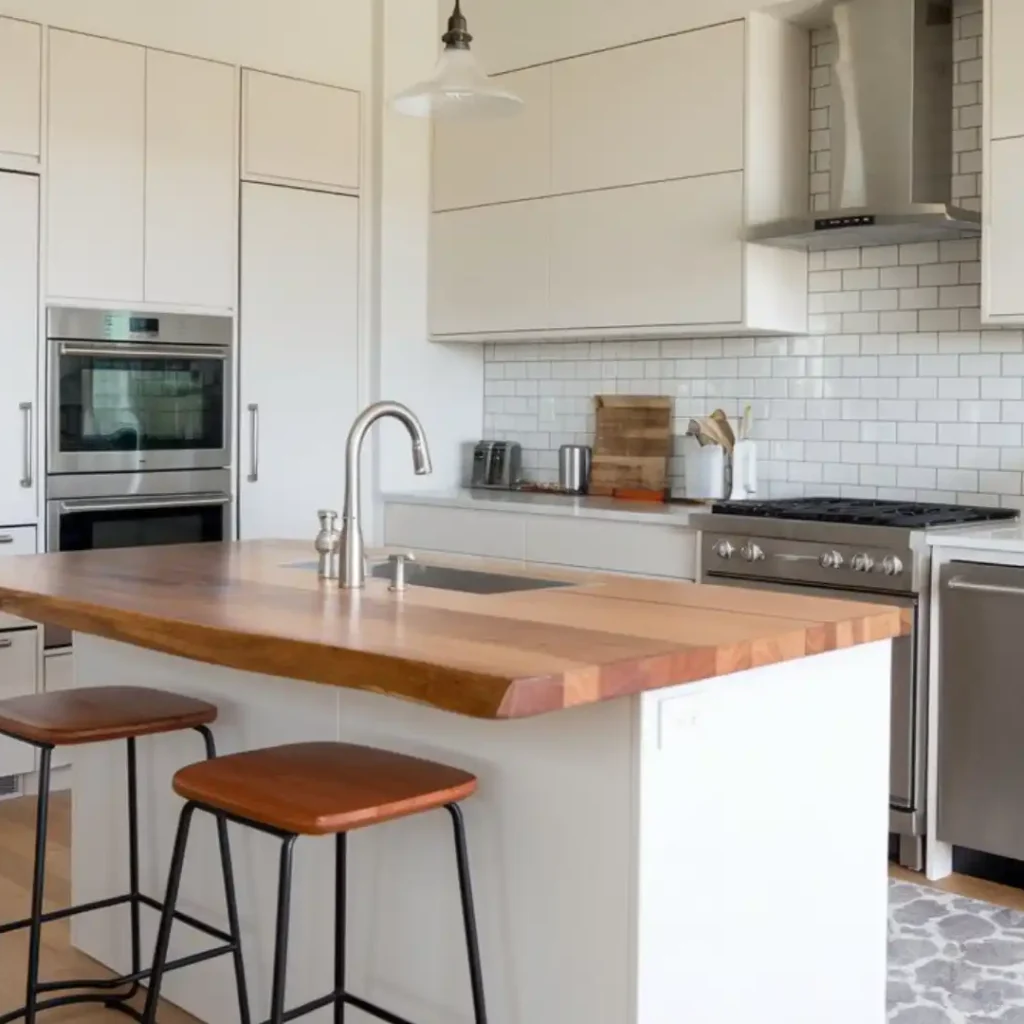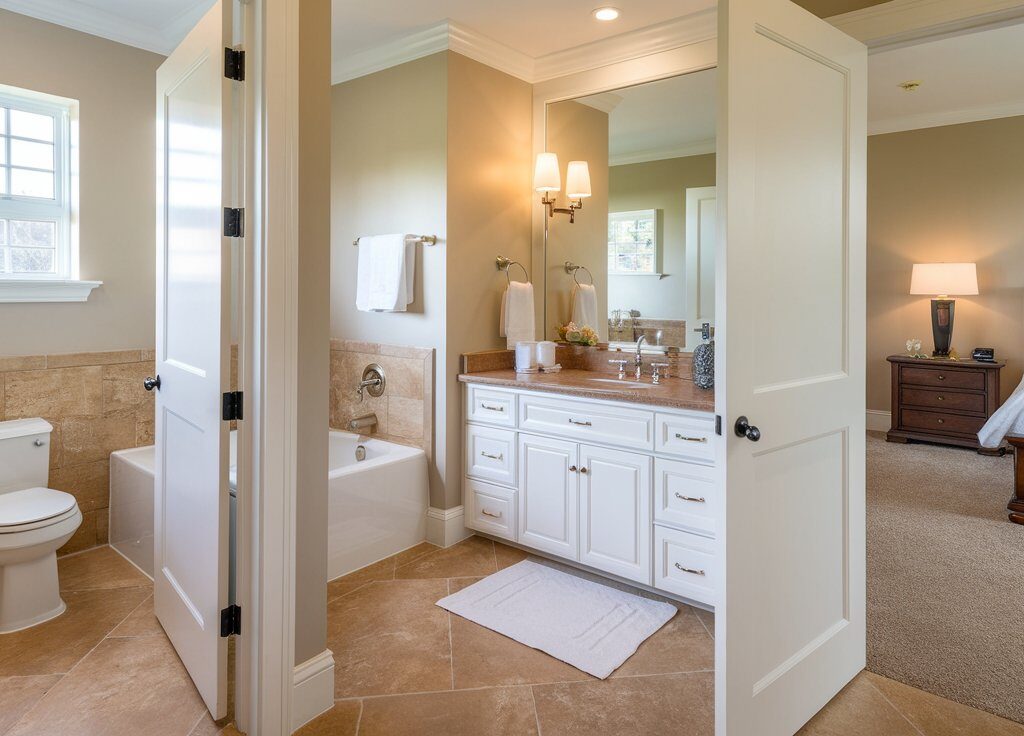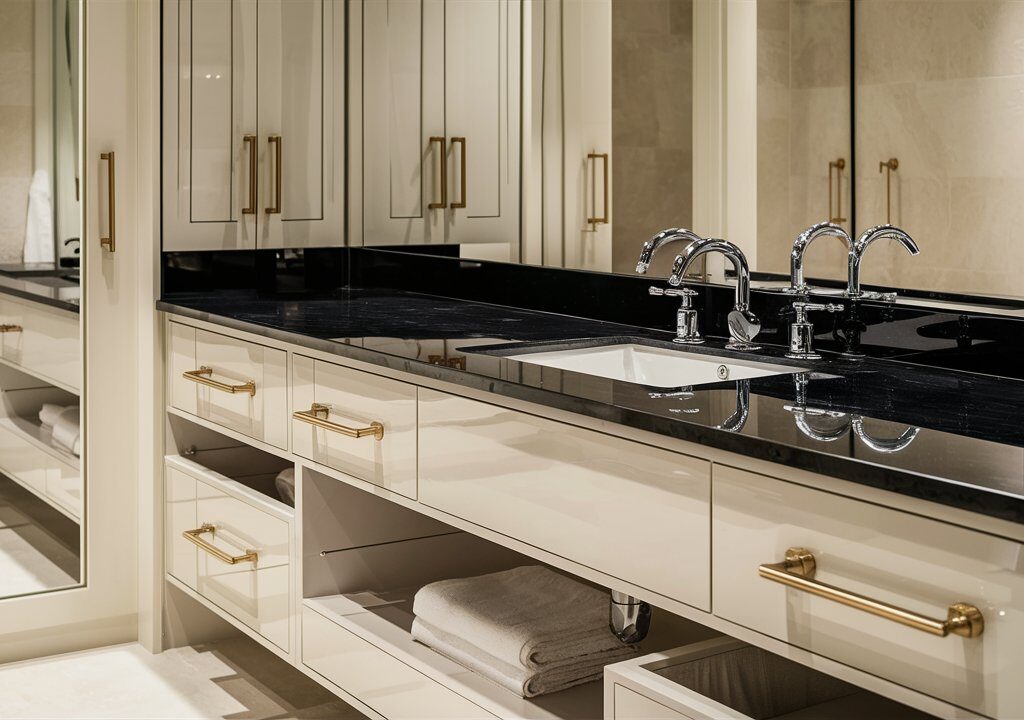- The Evolution of Kitchen Islands
- Key Features of a Kitchen Island with Sink and Seating
- Practical Benefits of a Kitchen Island with Sink and Seating
- Design and Aesthetic Considerations
- Customizing Your Kitchen Island
- Plumbing and Installation
- Maximizing Storage Space
- Family-Friendly Design
- Energy Efficiency and Sustainability
- Kitchen Island with Sink and Seating for Small Spaces
- Open-Concept Kitchen Integration
- Real Estate Value and ROI
- Common Mistakes to Avoid
- Conclusion
- FAQs
A kitchen island with sink and seating is one of the most versatile and functional additions to modern kitchens. By incorporating a sink and seating area into the kitchen island, homeowners can unlock multiple benefits that enhance both cooking efficiency and social interaction. Whether you’re renovating or designing a new kitchen, this setup is quickly becoming a must-have feature in homes across the globe.
The rise in popularity of the kitchen island with sink and seating reflects its adaptability to different kitchen sizes and layouts. More than just a work surface, this multi-functional feature can completely transform the way you use your kitchen space. In this article, we’ll explore the many hidden benefits and why this setup might be the perfect solution for your home.
The Evolution of Kitchen Islands
Early Kitchen Designs
In earlier centuries, kitchens were primarily functional spaces, often tucked away from living areas. The concept of a central work station, such as a kitchen island, was not yet widespread. Instead, kitchens were small, with limited counter space and minimal integration of seating or social spaces.
Modern Kitchen Trends
Today, kitchens are considered the heart of the home, and modern trends emphasize open-concept designs where the kitchen flows into living and dining areas. The kitchen island with sink and seating plays a pivotal role in these layouts, offering a central hub for cooking, cleaning, dining, and socializing.

Key Features of a Kitchen Island with Sink and Seating
Functional Design
The kitchen island with sink and seating is designed with practicality in mind. The inclusion of a sink allows for easy prep and clean-up, reducing the need to move back and forth between the island and other kitchen counters.
Importance of Incorporating a Sink
Adding a sink to your kitchen island is a game-changer. It improves workflow by creating a central station for washing, prepping, and even entertaining. Whether you’re rinsing vegetables or cleaning up after a meal, having the sink readily available keeps everything within arm’s reach.
Benefits of Seating Integration
Seating is another valuable aspect of the kitchen island with sink and seating. By incorporating seating options such as bar stools or a breakfast nook, the island becomes a versatile space where family members and guests can gather, eat, or simply keep the cook company.

Practical Benefits of a Kitchen Island with Sink and Seating
Enhanced Workflow
One of the main advantages of a kitchen island with sink and seating is the streamlined workflow it offers. The combination of the sink and seating allows for multitasking in the kitchen. You can wash vegetables, prepare meals, and entertain guests simultaneously without moving around much.
Multi-Tasking Advantages
Having a seating area within the kitchen island encourages social interaction. You can prepare meals while chatting with family or friends seated nearby, making the kitchen a more inclusive and engaging space.
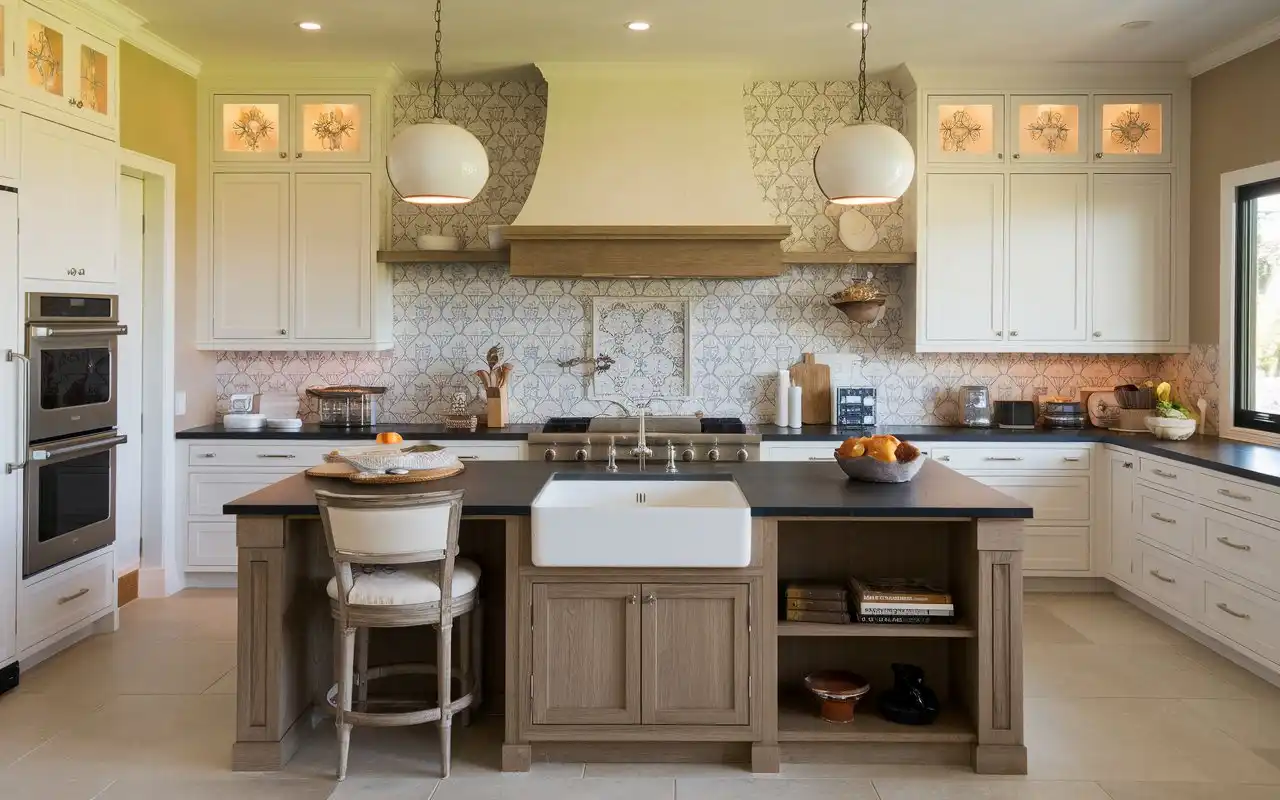
Design and Aesthetic Considerations
Choosing Materials and Finishes
When designing your kitchen island with sink and seating, selecting the right materials is key. You’ll want materials that are both durable and visually appealing. Popular choices include granite, quartz, and butcher block countertops. The sink itself can be made from stainless steel or composite materials that complement the overall design.
Harmonizing with Existing Kitchen Décor
Your kitchen island should complement the overall aesthetic of your kitchen. Whether your style is modern, rustic, or traditional, there are design options available to ensure your island integrates seamlessly into the space.

Customizing Your Kitchen Island
Choosing the Right Size for Your Space
When planning a kitchen island with sink and seating, size is crucial. The island should be proportionate to your kitchen’s dimensions, ensuring that it doesn’t overwhelm the space or restrict movement. In smaller kitchens, opting for a more compact island with a smaller sink and seating for two might be ideal, while larger kitchens can accommodate expansive islands with more elaborate setups.
Selecting the Appropriate Sink Type and Size
The sink is a focal point of your kitchen island with sink and seating. You’ll want to choose a sink that suits your cooking and cleaning habits. A farmhouse sink, for instance, is deep and perfect for washing large pots and pans, while a double-bowl sink allows for separating tasks like washing and rinsing. Depending on your needs and the size of your island, you can opt for single or double sinks, as well as undermount or drop-in designs.
Varieties of Seating Options
Seating is an essential element of a kitchen island with sink and seating. Whether you’re choosing bar stools, benches, or built-in seating, it’s important to consider both comfort and style. Bar stools with backs provide more comfort, especially for longer seating durations, while backless stools offer a sleeker, minimalist look. For a more cozy vibe, consider built-in banquettes or upholstered benches that can transform your island into a dining nook.

Plumbing and Installation
Considerations for Adding Plumbing to Your Kitchen Island
Installing a sink in your kitchen island requires careful planning, especially when it comes to plumbing. You’ll need to run water supply lines and drain pipes to the island, which may involve cutting into the floor or rerouting existing plumbing. It’s essential to ensure your plumbing is designed to handle the additional load of a sink.
Professional Installation vs. DIY
While some homeowners may opt for a DIY approach to building their kitchen island, installing plumbing is often best left to professionals. A licensed plumber can ensure that everything is up to code and that there are no leaks or drainage issues. A professionally installed kitchen island with sink and seating not only ensures functionality but also enhances your home’s value.

Maximizing Storage Space
Creative Storage Solutions
A well-designed kitchen island with sink and seating offers ample opportunities for storage. You can incorporate deep drawers, cabinets, and open shelving to store pots, pans, and small appliances. Some islands even feature hidden compartments or pull-out shelves to make the most of every inch of space.
Drawers, Shelves, and Hidden Compartments
To maximize storage, consider adding pull-out cutting boards, trash bins, or spice racks that slide out from beneath the countertop. Hidden compartments can store kitchen tools and gadgets, while open shelving allows you to display decorative items or frequently used cookware.
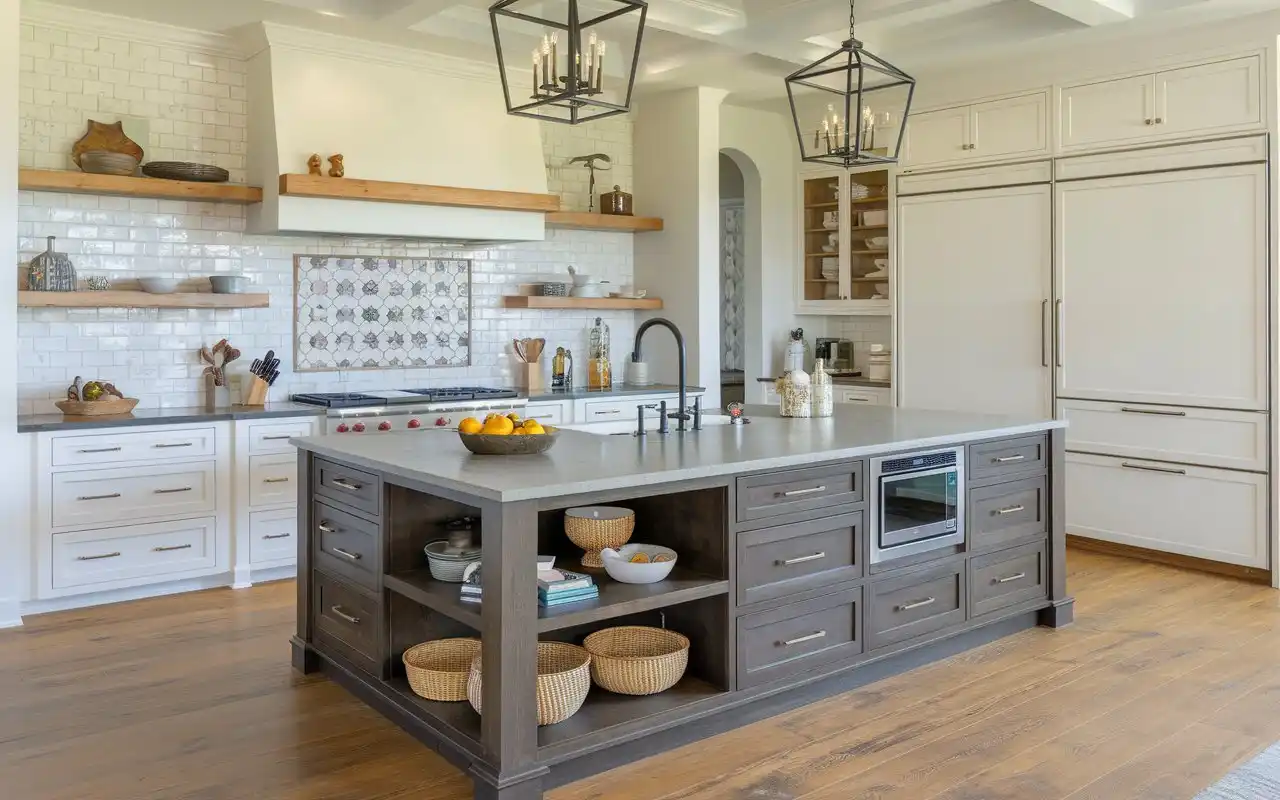
Family-Friendly Design
Central Gathering Spot for Families
The kitchen island with sink and seating serves as a central hub for family activities. Whether it’s helping the kids with homework while cooking dinner or gathering for a quick breakfast, the island fosters interaction and togetherness. It’s a versatile space where everyone can feel connected, even during busy times.
Safety Considerations for Children
When designing your kitchen island with young children in mind, safety is a priority. Choose rounded corners on countertops to avoid injuries, and opt for stools with back support to ensure stability. If your children will be using the seating area, make sure the stools or chairs are at an appropriate height for them to sit comfortably and safely.

Energy Efficiency and Sustainability
Energy-Efficient Plumbing Fixtures
If sustainability is a priority, consider installing energy-efficient plumbing fixtures in your kitchen island with sink and seating. Low-flow faucets can significantly reduce water consumption, while touchless faucets offer both convenience and eco-friendliness. Additionally, selecting fixtures made from recyclable or sustainable materials can further enhance your kitchen’s green credentials.
Sustainable Materials for Your Kitchen Island
Sustainability extends to the materials you choose for your island. Bamboo, reclaimed wood, and recycled materials are eco-friendly options that don’t compromise on style. These materials not only reduce environmental impact but also add a unique, natural aesthetic to your kitchen.

Kitchen Island with Sink and Seating for Small Spaces
Space-Saving Designs for Compact Kitchens
A kitchen island with sink and seating can be adapted for even the smallest kitchens. By opting for a narrow or L-shaped island, you can maintain functionality without taking up too much space. Floating or rolling islands offer additional flexibility, allowing you to move the island when more space is needed.
Innovative Solutions for Maximizing Functionality
For small kitchens, innovative solutions like foldable or extendable countertops can make a world of difference. Incorporating drawers that double as cutting boards or built-in knife blocks into your island adds functionality while saving space. A single-bowl sink may also be a better option in compact areas to avoid overwhelming the design.

Open-Concept Kitchen Integration
Complementing Open Floor Plans
In open-concept homes, the kitchen island with sink and seating seamlessly bridges the gap between the kitchen and living spaces. By incorporating the island into the overall flow of the room, it can serve as both a cooking station and a casual dining area, fostering interaction between family members and guests across different parts of the home.
Creating a Seamless Transition Between Kitchen and Living Areas
To ensure a smooth transition between the kitchen and living areas, the design of the island should align with the rest of the home’s interior. Coordinating the island’s materials and colors with furniture and décor in adjacent rooms helps maintain a cohesive look that ties the entire space together.

Real Estate Value and ROI
Adding Value to Your Home
A kitchen island with sink and seating can significantly increase your home’s market value. Potential buyers are often drawn to updated kitchens with functional, stylish islands that enhance both aesthetics and practicality. In many cases, a well-designed kitchen island can serve as a selling point, especially in homes with open-concept layouts.
Return on Investment for Future Sales
The return on investment (ROI) for a kitchen island with sink and seating is often substantial. Not only does it improve day-to-day functionality for the current homeowner, but it also boosts the overall appeal of the home to prospective buyers. Depending on the materials and installation quality, a kitchen island can provide a return of up to 70-80% of its initial cost.

Common Mistakes to Avoid
Poor Design and Layout Decisions
One of the most common mistakes when designing a kitchen island with sink and seating is choosing a layout that doesn’t work with the existing space. An oversized island can make the kitchen feel cramped, while an undersized one might not offer enough workspace or seating.
Oversizing or Undersizing the Island
Getting the size of the island just right is crucial. Measure your kitchen space carefully and ensure there is enough clearance around the island for people to move freely. It’s recommended to leave at least 36 inches of space on all sides of the island to allow for smooth traffic flow.
Ignoring Plumbing and Seating Ergonomics
Seating height and sink placement are key ergonomic factors. The height of the seating should be comfortable for dining, and the sink should be positioned at a level that reduces strain on your back during food prep and dishwashing.

Conclusion
A kitchen island with sink and seating offers a unique blend of functionality, style, and versatility. From enhancing workflow efficiency to providing a comfortable seating area for socializing, the benefits are numerous. Whether you’re planning a new kitchen or looking to upgrade an existing space, this feature can transform your kitchen into a central hub that seamlessly integrates cooking, cleaning, and dining activities.
In addition to its practical advantages, a kitchen island with sink and seating can significantly boost the aesthetic appeal and value of your home. With careful consideration of design, materials, and installation, this addition can serve as a long-term investment that offers both everyday convenience and a strong return on investment.
From choosing the right size and materials to integrating energy-efficient and sustainable options, a well-planned kitchen island can enhance your home’s functionality while reflecting your personal style. By avoiding common design mistakes and customizing the island to your needs, you can ensure that this multi-functional centerpiece works for your lifestyle and becomes a cherished part of your home.
For anyone looking to improve their kitchen’s layout, functionality, and aesthetic appeal, a kitchen island with sink and seating is an excellent choice that offers hidden benefits and long-term value.

